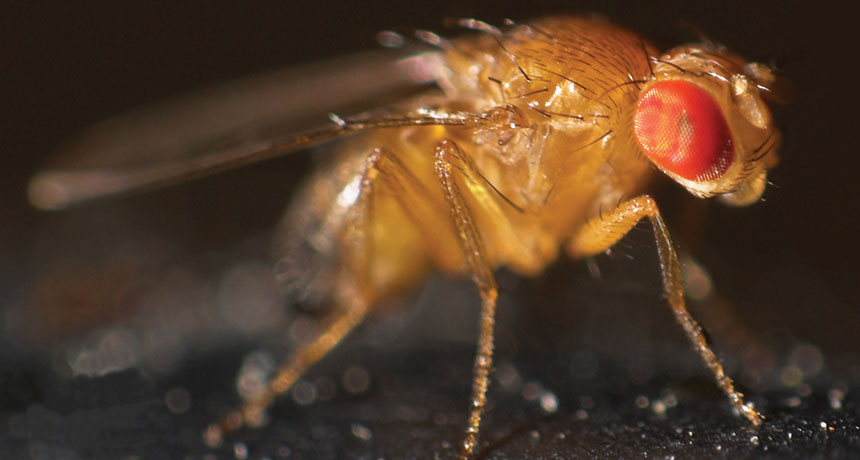Fruit flies flee from shadows
Faux predators instigate fearlike response suggestive of human emotion

BUZZ KILL An overhead shadow can scatter fruit flies (one shown), a response that may eventually help scientists understand complex emotions in people.
Mr.checker/Wikimedia Commons (CC BY-SA 3.0)